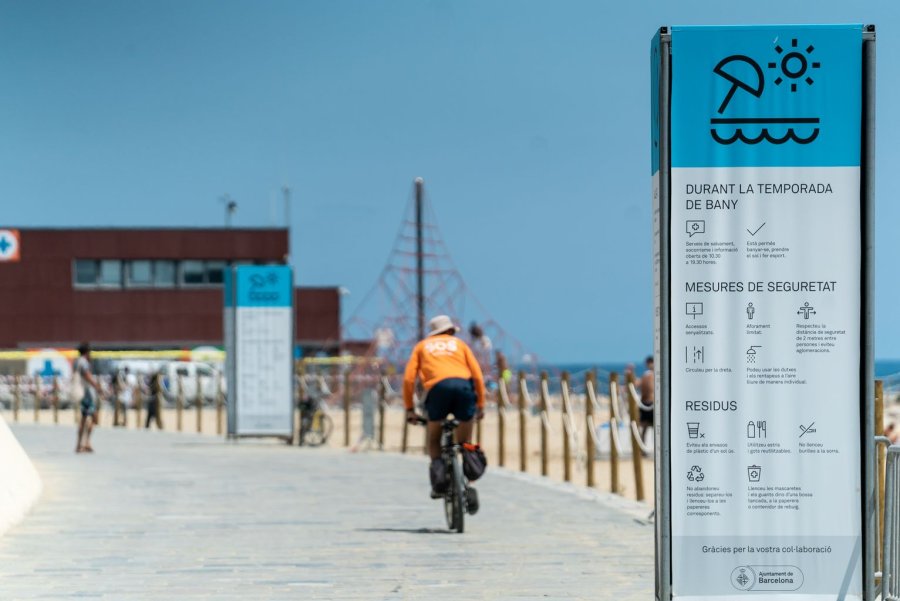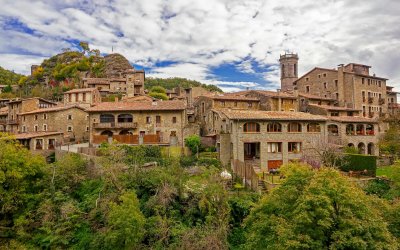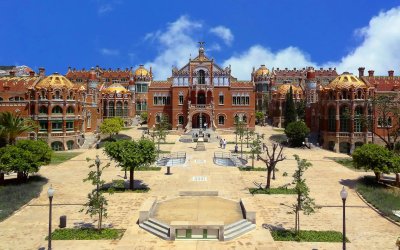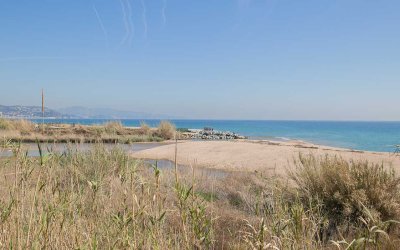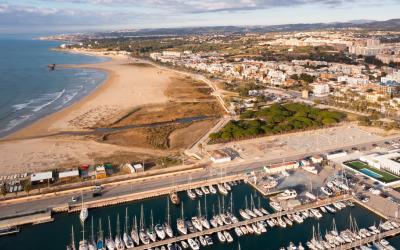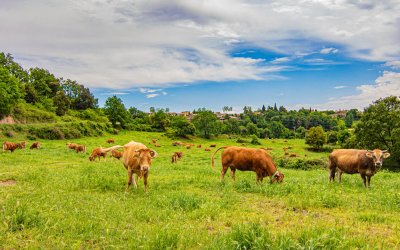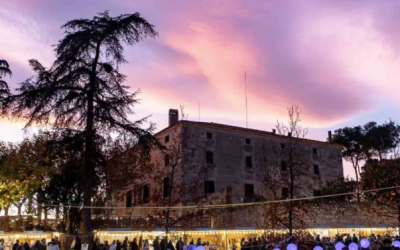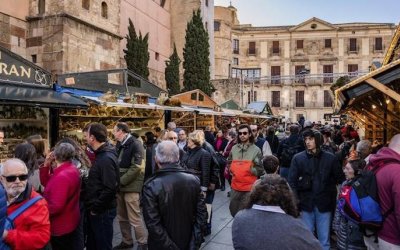The beaches of Barcelona city and province win over visitors not only for their beauty and wide range of services, but also for their Biosphere-certified commitment to sustainable tourism.
With a hundred kilometres of coastline, stretching from the Maresme to Garraf regions, each beach offers a unique experience, and it isn’t easy to choose just one. In this article, we’ll explore them with a focus on the highlights and sustainable management aspects of each one. Join us on this refreshing journey!
Urban oases for spending the summer in the city
Barcelona’s beaches span a total length of 4.5 kilometres, providing a break from the bustle of city life. In recent years, various measures have been taken to improve the benefits of these leisure areas for people’s physical and mental health and to enable them to play a crucial role in protecting the coastline in relation to the ongoing climate emergency.
These initiatives include the creation of a Lilac Point, which is a prevention and assistance service to combat gender violence and LGTBI phobia, located in the Beach Directorate building on the Bogatell groyne and supported by staff members patrolling the various beaches; a ban on smoking, except in beach cafés and on the promenade, in order to protect the environment and public health; improved accessibility, with designs and swimming support services for people with reduced mobility; and waste management, promoting the concept of Zero Waste through the elimination of single-use packaging.
In order to care for the seashore and its flora and fauna, a series of artificial reefs have been installed, simulating the surfaces and crevices of natural rocky seabeds and hosting various communities of marine organisms. These reefs promote the well-being of the seabed, which has a surprising biodiversity, and support small-scale fishing. They also offer a great area for environmentally friendly underwater activities.
These projects are in place throughout the city’s ten beaches, each one with its own personality and special features:
- Sant Sebastià Beach: located on the western side of the city, it is known for its prestigious sports clubs, which offer sea-related activities.
- Sant Miquel Beach: one of Barcelona’s oldest and busiest beaches, it was named after the Sant Miquel del Port Church, completed in 1755.
- Barceloneta Beach: at 422 metres long, this is one of the city’s most popular beaches, offering a vibrant social life.
- Somorrostro Beach: a symbol of the city’s recovery of its historical memory and one of the most iconic spots on the Barcelona seashore.
- Nova Icària Beach: with a relaxed atmosphere, this 415 metre-long beach is ideal for families and anyone wishing to relax.
- Bogatell Beach: offers a number of open-air leisure facilities, making it perfect for sports lovers.
- Mar Bella Beach: created in 1992 during the city’s Olympic Games redevelopment, it has a naturist area.
- Nova Mar Bella Beach: one of the beaches (the other is Mar Bella Beach) that were created when Barcelona recovered its seashore.
- Llevant Beach: the city’s newest beach, incorporated in 2006. During the summer it has an area for city residents with dogs.
- The Fòrum Swimming Area: a place without any sand, offering access to the sea via paved surfaces, where you can sunbathe or swim. Ideal for people seeking a different experience.
Enjoying the sea and nature in Barcelona province
Beyond the city, Barcelona province offers beaches that combine natural beauty and a commitment to the planet’s well-being. Starting at the northern end, in Maresme region, Santa Susanna is known for its well-equipped beaches with clean, coarse golden sand, home to the only population of the plant Reseda hookeri on the Iberian peninsula. Pineda de Mar has Platja dels Pins, a beach surrounded by spectacular pine woodland, offering an authentic, natural Mediterranean experience which invites you to spend long afternoons strolling and playing games with your family. Meanwhile, Calella caters for all kinds of tastes, from relaxing coves with crystal-clear water surrounded by cliffs, to urban beaches offering all kinds of activities. Sant Vicenç de Montalt offers accessible services and leisure areas, among other facilities, as well as a pretty promenade of architectural significance for its 19th and 20th century bourgeois houses.
Further south in the region, there are two coastal towns that also stand out for their Biosphere commitment. In Sant Andreu de Llavaneres, in addition to enjoying relaxing beaches and one of Catalonia’s best facilities for nautical sports, you really should try its famous coca cake. El Masnou has two well-equipped beaches served by public transport, perfect for an easy, comfortable getaway.
Gavà and Castelldefels, in the Baix Llobregat region right next to Barcelona, are also known for their beaches. Gavà offers unique pine woodland and a lagoon that is a nesting site and transit point for thousands of migratory birds. Furthermore, the city’s promenade, which respects the beach’s unique dune ecosystem, won a prize for its architecture. Castelldefels, located between the Llobregat delta and the Garraf Massif, is also known for its natural treasures and its accessibility, with areas adapted for people with reduced mobility.
Towards the southern part of Barcelona province, in the Garraf region, the blue-flag beaches of Vilanova i la Geltrú also have other certifications that speak to their water quality, cleanliness, safety, accessibility and commitment to the environment. In particular, the Platja Llarga is a biodiversity refuge in the Foix river delta. Sitges, with its mixture of 26 urban and unspoilt beaches, each with its own style (small, large, quiet coves, family-friendly, naturist, etc.), is a Biosphere Gold destination that ensures sustainability and quality. And lastly, Cubelles has natural beaches with protected dunes, along with other facilities and services, including a shaded area for amphibious-wheelchair users, perfect for anyone seeking comfort and contact with nature.
As you can see, the beaches of Barcelona city and province are very attractive for visitors and also a model of sustainability best practices. Responsible management has made them ideal destinations for enjoying the sea while also protecting the natural environment.

